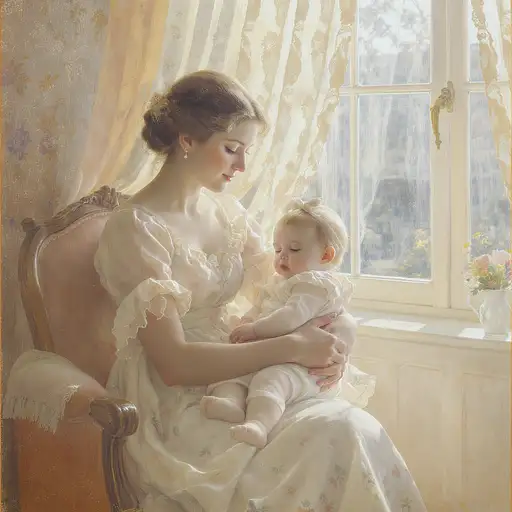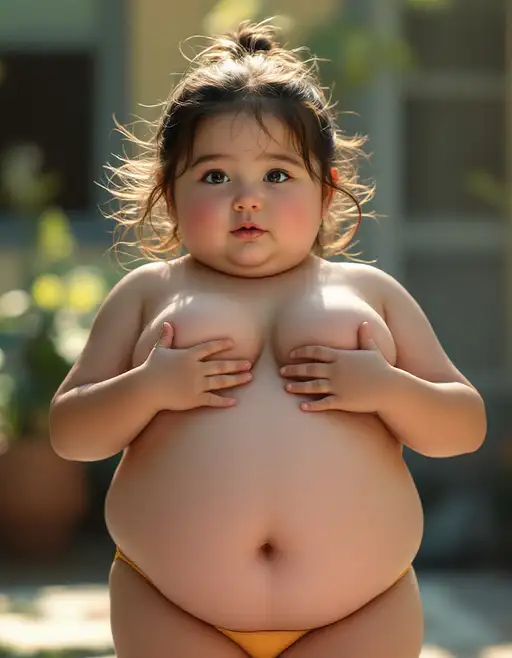6 months ago
London during Victorian times was a city of stark contrasts—opulent wealth alongside extreme poverty, with the bustling city streets serving as a stage for both. Let’s take a look at a typical day for women, children, and working men during this era:
### Morning in Victorian London:
As dawn broke over the city, the cobbled streets of London were already alive with the sounds of hustle and bustle. The air was thick with fog from coal fires, the cries of street vendors, and the clip-clop of horse-drawn carriages. The working-class residents of London, including women, children, and men, began their day before the sun had fully risen.
#### Women:
Victorian women, particularly from the lower and working classes, often had the responsibility of managing the home. However, many women worked outside their homes as well, particularly in factories, as domestic servants, or in the growing service industries.
- **Domestic life:** For middle-class and upper-class women, the day began with household duties, which might include overseeing servants, organizing the children, and tending to family affairs. Women of wealth were often confined to the house, and their roles were focused on managing the domestic sphere.
- **Work:** For working-class women, the day was physically demanding. Many of them worked long hours in factories, as laundresses, or in the garment industry, often for very little pay. The smell of coal and soot was pervasive in the air, as many factories and workshops burned it for fuel. These women usually dressed in simple, dark clothing—often dark skirts and aprons, with their hair tightly pinned up to avoid it getting caught in machinery.
- **Street vendors:** Some women worked in the streets as vendors, selling fruits, flowers, or even cheap goods like matches. The sight of women pushing carts loaded with goods or selling wares on street corners was common.
#### Children:
Children in Victorian London were often expected to work, and child labor was prevalent, especially in lower-class families.
- **Factory children:** Many children worked in factories, working long hours in dangerous conditions, particularly in industries such as textiles and coal mines. They were often employed because their small size allowed them to fit into tight spaces that adults could not. The work was grueling, and the children often worked from dawn until dusk, barely stopping for meals.
- **Street children:** Many children were also seen on the streets, some selling newspapers, others begging, or running errands for people. There was a large population of homeless children who lived in the slums, scraping by any way they could. Their clothes were often ragged, their faces dirty from the soot-filled air, and their bare feet a reminder of the poverty they endured.
#### Men:
The working men of Victorian London led difficult and strenuous lives, especially those in the lower classes. The city was booming with industrial progress, and manual labor was essential in keeping it functioning.
- **Factory workers:** Many men worked in factories, where they labored for long hours in noisy, dirty conditions. Men often worked 12-16 hour days, with little time for rest, and were frequently exposed to dangerous machinery and toxic substances. In many cases, the workers suffered from injuries or illnesses due to their harsh working environments.
- **Laborers and porters:** Men also worked in manual labor jobs, such as hauling goods at the docks, working as street cleaners, or acting as porters in hotels or public buildings. Their bodies were built from years of labor and their clothing typically consisted of rough, worn-out fabrics—often trousers and a shirt, with a waistcoat or jacket for formality.
- **Tradesmen:** Some men worked as tradesmen, like carpenters, masons, blacksmiths, or chimney sweeps. Their work was skilled but no less demanding, often requiring long hours and a high degree of physical effort.
### The Streets of London:
The streets of Victorian London were crowded with a mixture of people—rich and poor, women, children, and men—each going about their day in very different ways.
- **Street life:** As men and women moved through the streets, the poor and the rich lived side-by-side. The rich, dressed in fine top hats, tailored suits, and long coats, moved quickly through the crowded streets in carriages, while poorer citizens walked or rode on the tops of omnibuses (early public buses). The streets were filled with the sights and sounds of street vendors, begging children, and street performers, each trying to make a living.
- **Pollution and congestion:** The streets were often filthy, with horse-drawn carts and carriages leaving behind muck and waste, mixed with the smog from industrial factories. The heavy fog that often blanketed the city during the colder months added a sense of gloom to the cityscape.
- **Social divide:** The stark divide between the upper and lower classes was noticeable everywhere. While wealthier men and women strolled through well-kept parks like Hyde Park, the poor lived in overcrowded, unsanitary slums. It wasn’t uncommon for families to share cramped, dingy rooms with little access to basic hygiene.
### Workplaces:
The working environment for men, women, and children in Victorian London was harsh.
- **Factories:** Factories were places of long hours, poor ventilation, and little safety. Women often worked in the textile industry, operating machinery that could easily maim or injure them, while men and boys worked in mines, lifting and hauling heavy loads. Child labor was rampant, and many children faced long hours with little pay.
- **Domestic servants:** Many women worked as servants in the homes of wealthier families. These women often lived with their employers, and their work included cleaning, cooking, running errands, and caring for the children of the household. Their working hours were long, and they had little leisure time.
### Evening:
As the day came to a close, the streets of London saw a different crowd. Men returned home after their grueling workdays, and women, often exhausted, prepared meals for their families or spent time with children. The city would light up with gas lamps, casting a dim glow on the darkened streets, though the poor neighborhoods remained grimy and chaotic.
The lives of women, children, and working men in Victorian London were often defined by hardship, poverty, and labor. But despite the harsh conditions, these people were the heartbeat of the city, constantly moving, working, and striving to survive in a world of ever-growing inequality; 8k, intricate detail, photorealistic, realistic light, wide angle, kinkfolk photography, A+D architecture
























